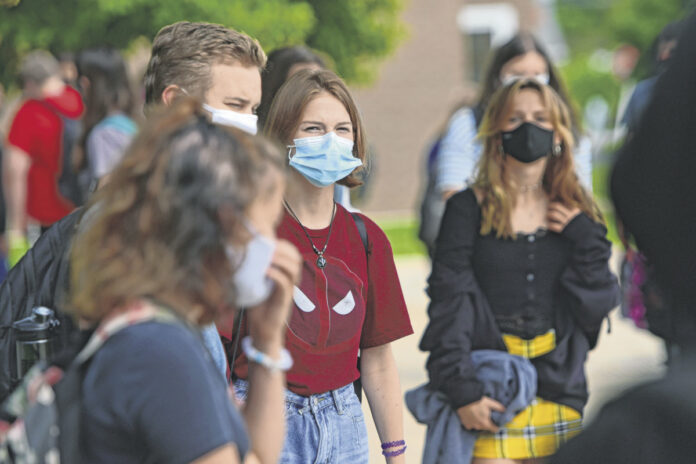
HANCOCK COUNTY — Schools are preparing for COVID-19 rapid tests, relaxed quarantine guidelines and shipments of personal protective equipment.
Next week, the state plans to send schools BinaxNOW COVID-19 antigen test cards for testing symptomatic students and teachers. Dr. Kristina Box, Indiana state health commissioner, said the tests require a nasal swab that’s applied to a card before reagents are added.
“If the student or teacher tests positive, the school will know immediately, and this will allow a school to more quickly to isolate the positive individual and reduce the spread of COVID,” Box said.
Box also said the state will provide detailed guidance on using the tests. If schools do not want them, she asked that they be given to their local health department.
Wes Anderson, director of school and community relations for Southern Hancock schools, said the district welcomes the tests.
“I think we see a lot of kids that are getting rapid tests right now, and I think the more we can do that, the better it’s going to be right now,” Anderson said.
New quarantine guidelines for schools go into effect on Monday, Feb. 8. Quarantining and contact tracing will no longer be required if students and teachers remain at least 3 feet apart and are wearing a mask at all times in the classroom.
Quarantining should still occur, however, with exposures that occur at lunch, athletics, band, choir or any other school setting, or if teachers and students have removed their masks.
“Data from individual schools in the state and across the U.S. indicate that it is rare for student infections to occur from exposure in the classroom when all parties are masked,” Box said.
Anderson said while Southern Hancock doesn’t track that data specifically, he and his colleagues have noticed a trend in that direction.
“We know the overwhelming majority of close contacts aren’t getting sick, so in that aspect, I think this is a great move to keep kids in school,” he said.
A close contact has been defined as someone within 6 feet of a positive case for 15 minutes or longer. Some schools have only been able to separate students by 3 feet, Box said, adding reduced spacing has not resulted in increased cases. She also said 14-day quarantines have placed an ongoing burden on schools, students and families.
Box said while the 14-day quarantine is still the safest option, 10 days would suffice if a close contact never developed symptoms and wears a mask at all times when returning to school. A seven-day quarantine would be sufficient if the contact gets a negative PCR nasal swab test conducted on day five, six or seven, or a negative rapid antigen test upon returning to school on day eight.
“We hope that these steps will help to decrease the disruption that COVID-19 continues to cause in our educational system and lead to quicker isolation of positive individuals, which will reduce the spread of the virus,” Box said.
Along with the rapid tests, the state also plans to send schools more than 1 million KN95 masks for teachers and staff and about 600,000 children’s masks for kindergarten through sixth grade, as well as hand sanitizer.
“Any time we can get our hands on those things for free, that’s a huge asset for us,” Anderson said.
The state is also making hand sanitizer and about 3 million KN95 masks available to front-line workers as defined by the Cybersecurity and Infrastructure Security Agency, which includes transportation, food service, utilities and other fields. Box said information will be sent to businesses about placing orders.




